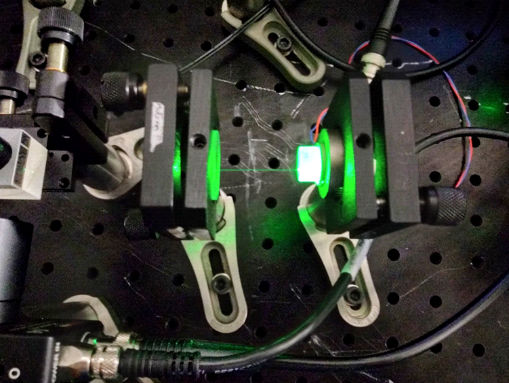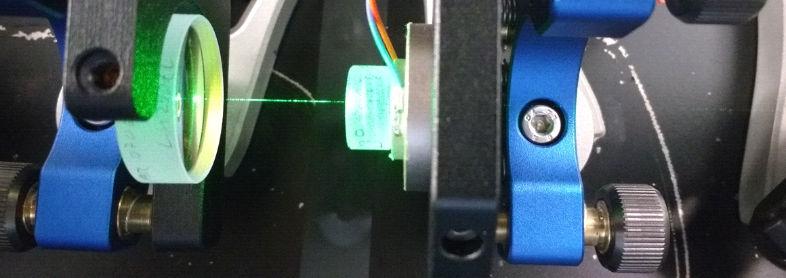Since the UV lasers, required to do antihydrogen spectroscopy, are difficult to make and not very powerful, we use an enhancement cavity to “enhance” the laser power. When the cavity mirrors are separated by a half-integer multiple of the laser wavelength, the cavity is resonant and forms a standing wave. This means that the light travelling back and forth between the mirrors interferes constructively, causing the power to build up. The circulating power within an enhancement cavity can be many times the power of the laser used to seed it, limited only by the losses in the mirrors.
A setup to demonstrate the phenomenon of cavity build-up was made for the Royal Society Summer Science Exhibition (RSSSE) in 2016 by S. A. Jones. [Fig 1] shows how the 532 nm laser beam – made visible using a mist generator – is much more intense within the cavity than outside it. Visitors were able to adjust the length of the cavity by applying a voltage to the piezoelectric crystal behind the right hand mirror, and lock the cavity on resonance using electrical feedback. The cavity demonstration was re-assembled for seminars without the mist generator, since the beam is easily visible in a dark room [Fig 2].

Source: Royal Summer Science Exhibition

